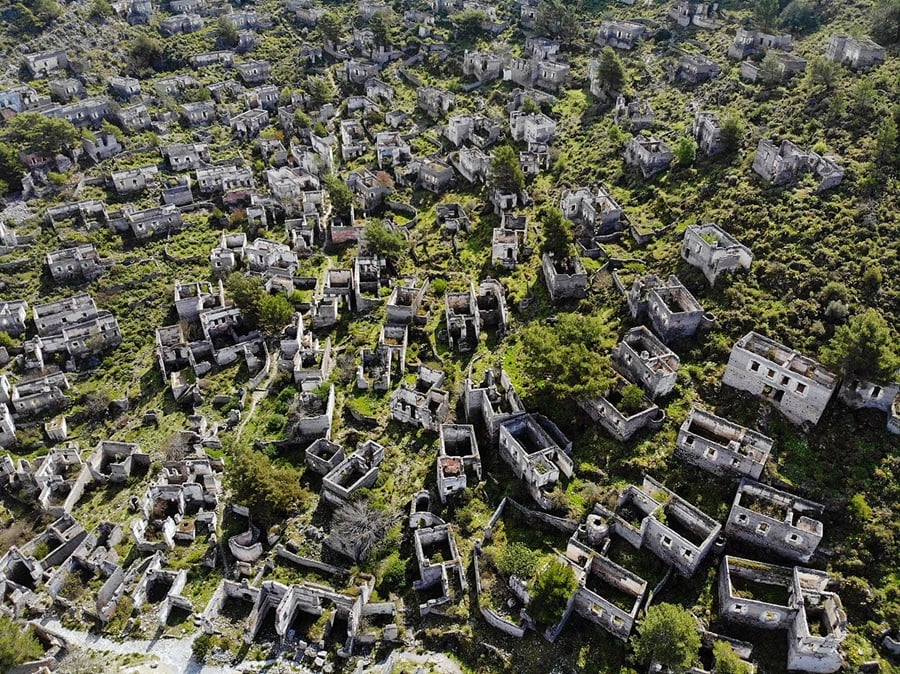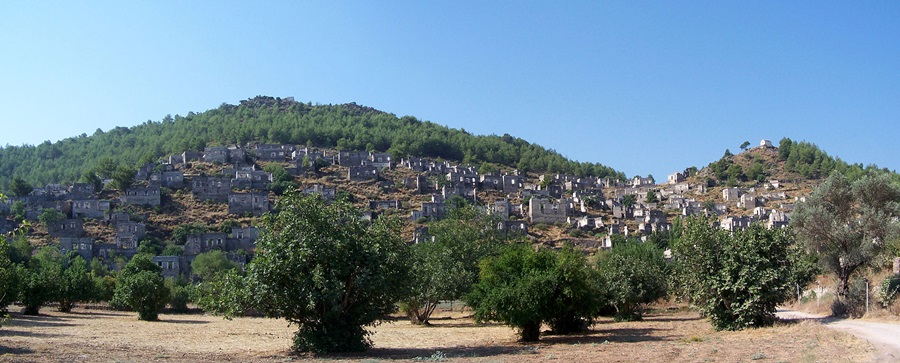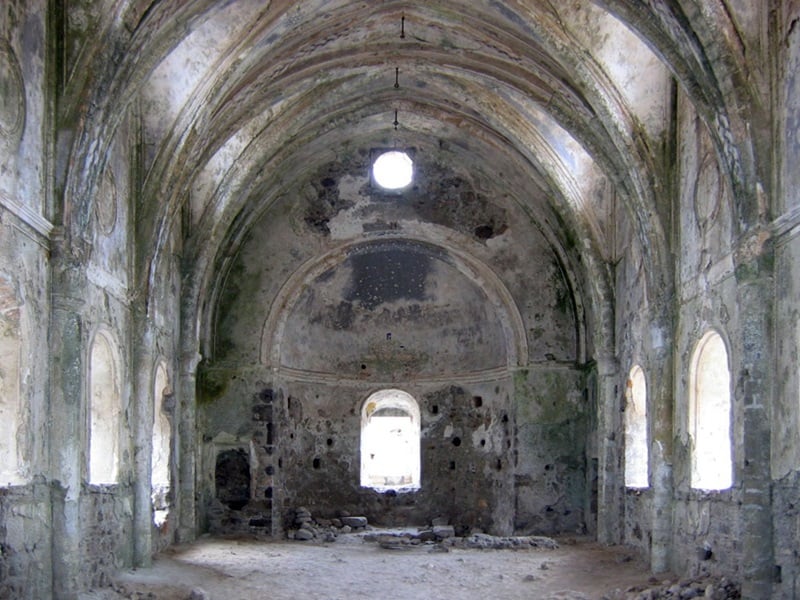
The ghost village of Levissi (known today as Kayaköy) was once a bustling Greek village on the slopes of a hill in the district of Fethiye, Turkey, almost opposite the island of Rhodes.
Greeks of the 5,000-year-old village were ethnically cleansed and then forcibly expelled in 1922, causing 10,000 people to leave behind the land of their heritage.
It was anciently known in Greek as Karmylessos. In late antiquity the inhabitants of the region had become Christian and, following the East-West Schism with the Church of Rome in 1054 AD, they came to be called Greek Orthodox Christians.
These Greek-speaking Christian subjects, and their Turkish-speaking Muslim Ottoman rulers, lived in relative harmony from the end of the turbulent Ottoman conquest of the region in the 14th century until the early 20th century.
The massacres of Greeks and other Christian minorities in the Ottoman Empire during World War I (1914–1918) led to the almost total depopulation of the town’s 6,500 Greek inhabitants by 1918. These former inhabitants were deprived of their properties and became refugees in Greece, or they died in Ottoman forced labor battalions.
Following the Greco-Turkish War of 1919–1922, and the subsequent Treaty of Lausanne in 1923, the town’s Greek Orthodox residents were exiled.

Greek village is a ghost town
Since then, the homes have remained vacant, left to decay after being further damaged by a huge earthquake in 1957.
Houses and churches in the area have been used for summer festivals, however, plans to lease the area and auction it off for commercial interests have caused local Turks as well as Greeks with roots in the area to protest. They are worried that the investors could further ruin the authenticity of the area.

The ghost town, now preserved as a museum village, consists of hundreds of rundown but still mostly standing Greek-style houses and churches that cover a small mountainside and serve as a stopping place for tourists visiting Fethiye and nearby Ölüdeniz.
The village is now empty except for tour groups and roadside vendors selling handmade goods. There are a few houses which have been restored and are currently occupied.
American filmmaker Joerg Schodl set out to document what is left of the ghost town in his documentary, “Ghosts of Levissi.”
Schodl tells the tale of the small Greek community in Asia Minor that was torn apart during the final days of the Ottoman Empire. It focuses on the disappearance of the population practically overnight thanks to campaigns, designed to scare Greeks from Levissi and nearby Macri (known as Fethiye), including offensives by Turks. The site Greek Genocide reports that women were raped and their clothes and shoes taken from them.
When making the film, Schodl had the help of members of the Greek community in Melbourne, Adelaide, Sydney, Perth and Brisbane and he was able to find thirteen descendants of Levissi families. More descendants were found in Toronto, Rhodes, London, Athens and Istanbul.
See all the latest news from Greece and the world at Greekreporter.com. Contact our newsroom to report an update or send your story, photos and videos. Follow GR on Google News and subscribe here to our daily email!



